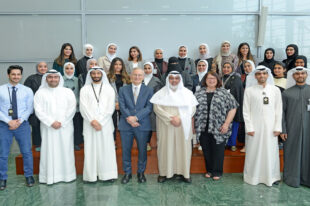Innovation in Improvements to Concurrent Control Reports for Government Auditing of Large Public Infrastructure Projects

Author: Elio Canario Zelada, Supervisor, Office of the Comptroller General of the Republic of Peru
Some Supreme Audit Institutions (SAIs) have been implementing the Concurrent Control, a process created by the SAI of Peru, as it is a valuable tool for control of large projects. However, it is appropriate to raise innovative proposals aimed at improving the process of concurrent control in order to improve adverse situations identified by government auditors. Based on the lessons learned to date, it is important to improve the levels of effectiveness and efficiency in their interventions, with the goal of replicating their effect on the control by other SAIs that have decided to implement similar controls.
The Concurrent Control of public programs is one of the best practices for the control of the execution of large public infrastructure projects and is effective due to its functional autonomy and systematic and multidisciplinary nature. The concurrent control process does not imply interference in the management processes or the administration of the entity, nor does it limit the exercise of other governmental control services.
In the planning of the audit, the government auditor should study the project’s technical file to understand any underlying doubts, and should dissipate them in a visit to the meet with the project’s Works Supervisor. The audit’s first key milestone should be the analysis of the technical file to rule out cost overruns, duplicative items, inconsistencies in the metrics, and above all, to ensure a degree of certainty of the technical support of the work to be performed. This review will ensure that the work will meet the objectives for which it will be built.
In the construction of bridges, railroads and airports, the auditors must review the technical file to verify if it has sufficient support. Within the technical file, auditors should ensure that the projects have all the permits in the route of travel and the correct location of the components necessary for the work, which must align with the pronouncements of specialized studies that support the technical file. It is not enough for auditors to review the compliance of the contractual clauses, as they should ensure that such clauses contain adequate protection of the main risks for the infrastructure construction.
After auditors have ensured that there is an approved technical file, and that the land where the work will be built has been delivered to ensure the correct execution of a project, it is very important to analyze if the work has adequate technical support, and if it will comply with the purposes for which it was built.
In Peru, there are experiences to reflect on, such as the construction of a high technology oil refinery. The refinery has a high volume operating capacity, and required a strong investment. However, the project planning did not justify the supply side of refining raw materials. Peru may lack the appropriate number of oil wells needed to meet the demand for the use of the refinery’s capacity for which it was constructed. Without having justified the demand for raw materials, it did not guarantee efficient use of the refinery due to its large capacity.
Additionally, due to lack of appropriate technical studies, Peru has drinking water infrastructure projects that, in the end, are not used because the water extracted from the subsoil is in contact with minerals and is not suitable for human consumption. This fact can be noticed in the initial stage of drilling. In this stage, the Control Organ can halt the work if the regulations allow it, because it would not comply with the purposes for which it was built. However in some cases, we can see the construction of elevation tanks and laying of networks which have remained inoperative, resulting in greater inefficiencies and waste for the State.
As another example, Peru has the construction of bridges in sandy places where water currents easily undermine their foundations, while there are other nearby rocky places that guarantee stability and durability of the bridges built. Peru also has airports built next to an abyss and therefore, the airports cannot be expanded. This prevents the landing of large-scale airplanes, especially in the Sierra, while there are nearby places with the characteristics of the terrain that are more favorable for their construction.
Another component to take into account is the timeliness of the interventions of the government auditor. For example, it is a critical stage for the government auditor to be present in the construction of roads during the filling of the asphalt layer. During this stage, the auditor should verify whether it is in accordance with the provisions of the technical file. However, this requires the government auditor to have sufficient judgment to judge the technical file, to analyze whether the thickness of the layer is adequate in the circumstances, depending on the type of traffic to which the work will be subjected once completed. In this sense, if the asphalt layer executed by the contractor does not meet the characteristics foreseen in the technical file, the auditor should proceed to determine the economic damage, carrying out the audit with indication of the damage and the identification of those responsible and not wait until the work is concluded. By doing so, while the work is not fully executed, the contractor can correct what is wrongly done. It should not be an obstacle for the immediate execution of the audit that the damage caused was identified.
In this sense, the SAI of Peru has regulated the form and scope of the audit procedures by defining the issues under examination to ensure the quality and content of the reports. It is extremely important that expert auditors study the risks associated with each activity when reviewing the technical files. SAI Peru needs professional experts, not only to verify the seven subcategories that have been established for review on substantive issues, but so that government auditors can focus their work on the main risks associated with each activity. With expert review, the adverse situations contained in the resulting reports would be even more relevant and important, and thus, save the State resources when there is the need to justify the stoppage of a work that would not meet the objectives for which it is being built. By not waiting until all disbursements are made according to contract, this can limit and reduce the economic damage caused to the State.
These seven subcategories are related to:
- Unexecuted penalties,
- Payment for non-executed metrics according to the contract, partially executed or unsubstantiated;
- Non-withheld performance bonds,
- Legal interest to be recognized,
- Unsubstantiated additional work,
- Unsubstantiated term extensions, and
- Others that the current regulations require their analysis and understanding within the scope of the audit.
These seven subcategories do not cover the most important risks reported by the public in the execution of works, especially if the penalties are not executed and the payment for non-executed metrics, according to the contract, can be solved by creating sanctioning regulations to force the Entity to carry out the work within a reasonable period of time.
In Peru, for example, there is no sanction for those responsible for not having executed the liquidation of the work. It is feasible for auditors to identify penalties for work not executed, which are generally due to deadline extensions caused by the contractor and the lack of participation of key personnel in the execution of the project.
In addition, in alignment with the technological development in the work of SAI Peru and the SAIs of the region, there are applications for artificial intelligence in this process. Artificial intelligence can be used to assess whether there is alignment across the contract agreement, whether the contractor presented the guarantee of work for the established amount, and if this guarantee has been issued by a competent entity supervised by the Superintendence of Banking and Insurance. This would expedite the verification profess, and not require waiting until the control commission is accredited for the exercise of the Concurrent Control.
On the other hand, with respect to the recognition of interests, payments of additional work and term extensions, regulations can be established so that this information is communicated to the Comptroller’s Office within a determined period of time by the Supervisor of the Work, or provide for the integral publication of the documentation of the execution of the works on the entity’s website, thus complying with the immediacy of the interventions of the SAIs.
If government auditors would evaluate the study of the technical file as milestone No. 1 in the Concurrent Control process, paying attention to the most common risks, interventions could be carried out in due time and identify immediately if the economic damage caused to the entity. The Concurrent Control audit would significantly improve the adverse situations in the SAI reports, being that this approach should be replicated in order to achieve better standards in the Audit and Control of large infrastructure projects.





